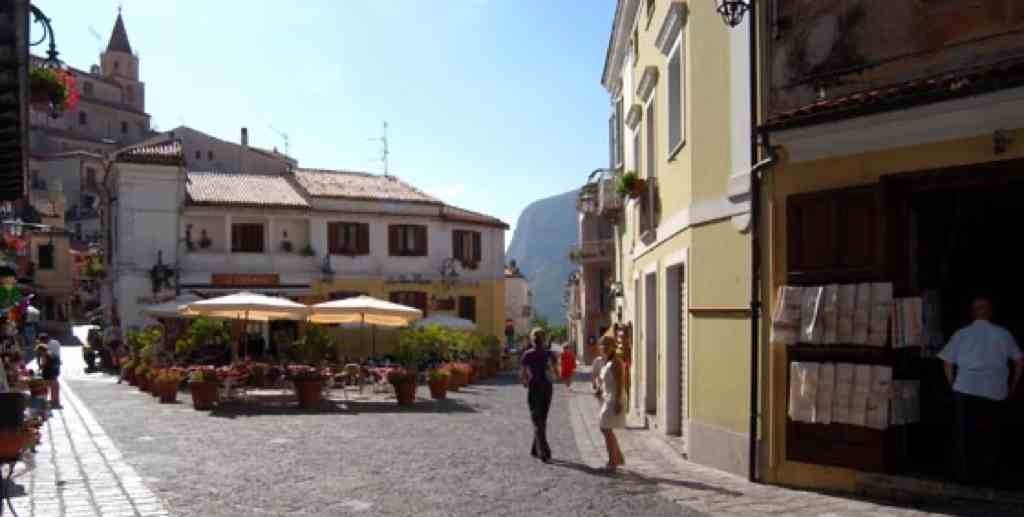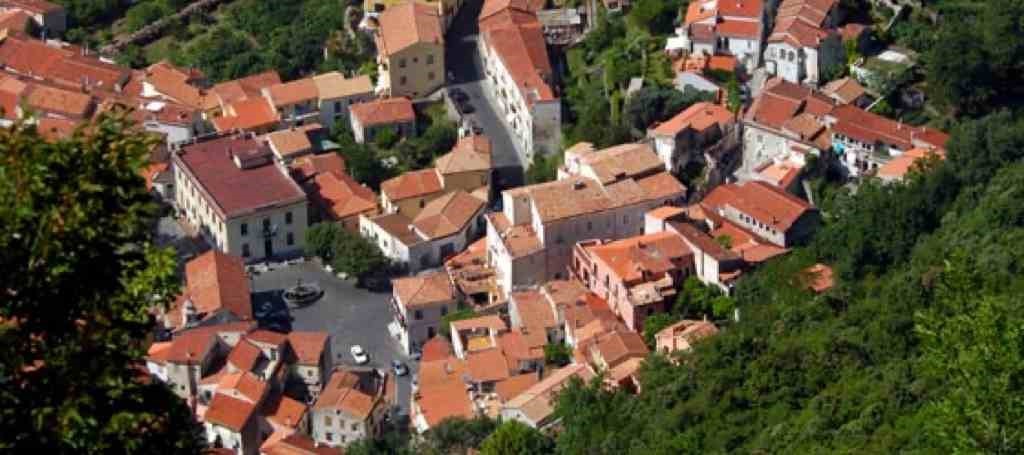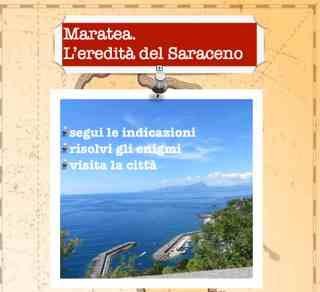Buraglia Square | Historical Center of Maratea
The "Piazza", with its churches, its streets, its lanes

[More from Maratea's Historic Center]
You then go back along the same route and then take the narrow alley that leads from the church of the Chiesa Maggiore to Piazza Buraglia, where, on the main street of the village, you meet the Obelisk of S. Biagio.
Raised in 1738, it consists of three elements: the stone base, with the emblem of the Bourbon of Naples and that of Maratea, the marble column, according to the tradition caught in Cala Jannita and the statue of S. Biagio, Neapolitan opera of 18th century.
Behind the obelisk is the church of the Annunziata, built in the 16th century: two 16th century stone lions side by side with a bezel painted in the seventeenth century.
A little further on is the church of the Immaculate Conception, built in the 18th century as the seat of a congregation, where the original nucleus of the church, which deserves a visit, emerged during the renovation works.
Il sito www.maratea.info è aggiornato dai volontari di ALTRITURISMI.it
FAI UNA DONAZIONE
- Per essere aggiornato sulle attività di AltriTurismi ETS -> Iscriviti alla newsletter

Coming from Piazza Immacolata to Via Casaletto you arrive at Torre della Calata, and continue, in front of the portal of the Marini d'Armenia palace (1725).
it's one of the three towers in the Old Town and was built in the 16th century, with a square plant with a tapered base on which a second body is restored from the stone cornice; From the rear are the balcony and the passage connecting the tower to the adjacent building.
Continuing along the downhill road, take the small pier, which leads to the church of Calvary, in the first half of the 14th century: on the facade is a branch with a fresco of 1548.
In the surroundings of the Borgo
At the bottom of the piazza Europa is the convent of the Friars Minor, with the nearby church of the Rosary.
The convent, probably already active in 1574, as evidenced by a papal bull Gregorio XIII, was occupied by the Franciscan brothers until 1866, and was later transformed into a woman's boarding school under the name of "Institut De Pino. "
The convent has a two-storey cloister, with a double row of semicircular arches resting on columns of ionic type.
Adjoining is the church of the Rosary with porch and large single room.
The interior decoration dates back to the early 17th century.
Behind the monastery, take the road leading to Villa Comunale, which then goes to Buraglia Square, and on the left you will see a large square where the Capuchin monastery, built in 1615 and used until 1866, The operations center of the Ministry of Culture, receives objects found in the territory, including amphoras and anchors recovered in Santo Janni.
Next to the convent are the Capuchin chapels, a complex of three small loudspeakers with frescoes from the late 16th century.
back to: tne Medieval Village
CACCIA AL TESORO
Un nuovo e divertente modo di esplorare la città
UN' AVVINCENTE CACCIA AL TESORO
che unisce nel divertimento tutta la famiglia




